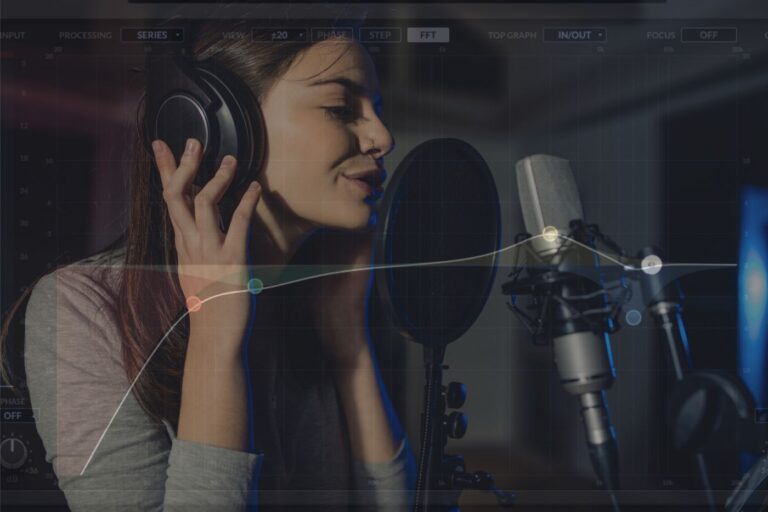How to Make Ambient Music: Tips for Dark Atmospheres

Ambient music is one of my favorite styles to create. Crafting soundscapes that can transport listeners to a different world is challenging yet satisfying.
With its origins rooted in the idea of atmosphere over traditional melodic structure, ambient music invites you to explore musical textures through experimentation.
KEY TAKEAWAYS
I get asked for ambient music often in my line of work as a professional composer.
My approach to making ambient music is to begin with a foundational element, such as a drone or pad, and then build layers with instruments and field recordings.
It’s important to have the right equipment and software to assist you in producing high-quality tracks. From digital audio workstations to synthesizers and effects pedals, your toolbox will be instrumental in shaping your unique sound. The beauty of ambient music lies in its fluidity and lack of strict rules, allowing you to express creativity freely. Whether inspired by nature, emotions, or purely abstract concepts, composing ambient music lets you convey mood and depth without words.
Focus on arrangement and sound design to evolve your sonic landscape, keeping listeners engaged and intrigued by the immersive worlds you create.
How To Make Ambient Music
Ambient music is defined by its diffuse, atmospheric qualities that are often achieved through gentle, electronic instrumentals. This genre emphasizes creating a mood or atmosphere without the constraints of a persistent beat, showcasing a serene and immersive experience.
Historical Context
The roots of ambient music trace back to the early 20th century, when French composer Erik Satie’s concept of furniture music was designed to blend into the background of everyday life. Avant-garde artists like John Cage, who emphasized ambient soundscapes, further explored this idea.
Brian Eno significantly shaped the genre as we know it today in the 1970s. They integrated electronic elements to craft immersive sound worlds. Eno’s compositions redefined the purpose of music, shifting focus from melodic and rhythmic structures to texture, mood, and atmosphere.
These pioneering efforts laid the groundwork for what would become a diverse and evolving genre of music.
Key Elements and Style
Ambient music is characterized by a focus on tone and atmosphere over traditional structure and rhythm.
Key elements involve the use of space and silence, complemented by detailed sound design, careful panning, and rich reverb effects.
Most ambient tracks shun traditional percussion in favor of texture, using swelling cymbals and evolving drones to create a sense of expansiveness. The absence of a steady rhythm gives the music its calming, ethereal quality, allowing you to explore a sonic landscape that feels both immersive and infinite.
Your personal taste and creativity are crucial in giving the music a unique voice, distinguishing your work, and giving you a chance to showcase your sound.
Gear and Software Essentials
Having the right studio gear and software is fundamental to creating captivating ambient music. MIDI controllers and synthesizers can help shape rich soundscapes, while choosing a DAW can greatly influence your creative process.
Choosing the Right Equipment
When selecting your equipment, consider what your production needs are.

MIDI Controllers
MIDI controllers offer tactile interaction with your software, facilitating fluid performances and sound manipulations.

Synthesizers
Synthesizers, whether hardware or software, are vital for crafting the atmospheric sounds typical in ambient music.

Guitars
While hardware synths like a favorite analog model can yield unique textures, instruments like electric and acoustic guitars can add depth and character.When processed through effects, guitars are excellent for creating expansive sonic environments.
Exploring these options will enrich your music production process.
Exploring Digital Audio Workstations
Your choice of a digital audio workstation (DAW) is crucial. Popular choices like Ableton Live, FL Studio, Cubase, Pro Tools or Logic Pro offer diverse tools suitable for ambient music. A DAW with robust sound design features can help you layer sounds and sculpt the intricate textures needed.
Look for features such as extensive preset libraries and plugins that enhance soundscapes. Some DAWs include powerful synth plugins out of the box, which might become your prime tool for creating and evolving lush tones. Familiarizing yourself with your DAW’s capabilities will enable seamless creativity in your ambient music projects.
Here’s my take on the DAW options; any modern DAW will be great. It comes down to your preferred workflow and which DAW fits that workflow the closest. You want a rig that’s not on your way but instead helps with your creative flow. The DAW must be like an extension of your mind, almost like an instrument on itself.
Check out some YouTube videos on each DAW, and install their trials to take them for a test drive. You’ll know fairly quickly which one feels just right.
Crafting Your Sound
Creating ambient music involves blending unique sounds and textures to shape a distinct auditory environment. Focusing on sound design and combining natural and electronic elements ensures that your music resonates with listeners by capturing their imagination.
Sound Design Techniques
Sound design is crucial in crafting ambient music. Start by exploring granular synthesis to manipulate small sound snippets, creating evolving textures. This technique allows you to transform simple samples into complex layers that add depth to your tracks.
Experiment with tools like spectral processing and filter cutoff to sculpt the timbre of your sounds. These methods help emphasize specific frequencies and create atmospheric sounds. Playing with chord progressions can also provide a harmonious structure, enhancing the emotional depth of your compositions.
Incorporating Natural and Electronic Elements
Blending natural acoustic instruments with electronic elements gives your ambient music a rich, layered sound. Utilize field recordings to capture natural sounds like rain, waves, or birds, adding an organic quality to your music. These elements provide a foundation of familiarity and tranquility.
Combine these recordings with electronic components such as synthesizers or digital effects. This fusion offers a balance, grounding the ethereal electronic tones with real-world textures. Integrating atmospheric sounds with electronic music elements allows you to create a unique sound that transports listeners to another realm.
Composition and Arrangement
Creating ambient music involves thoughtful composition and arrangement to craft immersive soundscapes. Focus on building layers and textures to achieve depth while maintaining a structure that supports its evolving nature.
Building Layers and Textures
Start with layers of sound to create a rich and immersive experience. Use elements like pad sounds and ambient atmospheres to provide texture and depth. The layers are essential in producing a sense of space, which is crucial for ambient compositions.
Experiment with different sound sources, combining synthesized tones with natural or recorded sounds to add variety. Incorporate simple, repetitive motifs that can be subtly altered and looped to maintain engagement. Consider using effects like reverb and delay to smooth transitions and enhance the ethereal quality of the atmosphere.
Structural Considerations
While ambient music may differ from traditional song structures, it still benefits from thoughtful arrangement. To anchor the composition, begin with a foundational element, such as a drone or pad.
Develop a gradual progression, allowing the composition to evolve slowly. This supports the flow and gives listeners time to immerse themselves fully. Avoid abrupt changes; introduce new elements smoothly to maintain a cohesive, relaxing feeling.
Consider using silence or minimalism strategically, creating contrast within your piece. The interplay between sound and silence helps shape the ambient soundscape and maintain intrigue throughout your composition.
Production Techniques
Exploring ambient music production requires attention to effects and a nuanced crafting of soundscapes. Key elements include the strategic use of reverb and delay effects to create atmosphere and volume automation to ensure dynamic flow.
Mixing and Effects

Mixing ambient music relies heavily on reverb and delay effects. A lush reverb can transform simple sounds into expansive soundscapes, while a long reverb sustains ambient textures. Convolution reverb is especially useful for creating a real-world acoustic feel.
Delay effects add depth and can help fill the stereo field, creating an immersive experience. Combining different delays with modified feedback and timing can add interesting layers to your mix. Volume automation is essential for achieving smooth transitions, ensuring that each element ebbs and flows seamlessly within the track. Adjust levels dynamically to accentuate the ambient nature of your music.
Mastering the Art of Ambient
When you start really internalizing the style and your tracks start sounding like masterpieces, it’s time to refine them to enhance their immersive qualities. Consider the stereo field and instrument placements carefully—creating a wide, enveloping sound is crucial. Use mid/side processing to emphasize certain elements and give space to others.
My biggest advice here is to make sure not everything is a full-width L to R massive sound, taking up the full stereo spread. Most modern software synths, by default, give you a fully spread sound with all their presets, and if you don’t adjust the panning and stereo placement, you’ll end up with a mix that actually sounds like it’s in mono due to every element taking up the full spectrum.
Think about instrument placement and use it to create separation in the mix and to help specific elements stand out.
EQ is a another potent tool for ambient producers. Adjust it to carve out unwanted frequencies while boosting essential textures. Strive for balance between high and low frequencies to maintain clarity.
Pay attention to dynamics; gentle compression can add consistency without flattening a track’s natural variations.
The production process here is about subtle enhancements that highlight ambient music’s intrinsic tranquility and depth.
Conclusion
Crafting dark atmospheres in ambient music can be a deeply rewarding process, allowing you to explore soundscapes that evoke mood and depth.
Focusing on essential elements such as pad sounds, sustained textures, and a careful balance of high and low frequencies can create immersive experiences for your listeners.
Experimenting with different instruments, audio samples, and even ambient noise offers a powerful way to uncover dynamic, interesting results and expand your sonic space. Choosing the right tools plays a crucial role in achieving one’s vision.
Remember, your creativity is the most important tool in ambient music. Let it guide you as you refine your unique style.
Pay special attention to composition techniques and production details, and you’ll find that ambient music is a great way to express yourself and a pathway to discovering your own unique sound.
Frequently Asked Questions
What are the essential software tools for creating ambient music?
Look into using Digital Audio Workstations (DAWs) like Ableton Live, Logic Pro or FL Studio. These platforms offer versatile features for sound manipulation and layering. Utilize virtual instruments, synths, and effects plugins to craft unique sounds that resonate with ambient vibes.
What equipment is typically required to start producing ambient tunes?
To start producing, you’ll generally need a good quality audio interface, studio monitors, and headphones to hear intricate sound details. A MIDI keyboard can be handy for playing synth parts. Additionally, a condenser microphone is useful if you plan to incorporate field recordings or live instruments into your tracks.
Can you explain the process of making ambient music from scratch?
Begin by laying down a soundscape with pads or drones. Add layers using textures like field recordings or synth sounds. Experiment with effects like reverb and delay to create space. Automate these effects for movement. Finally, balance your mix to ensure all elements blend smoothly and maintain an immersive experience.
What are some beginner-friendly methods to produce ambient music in DAWs like FL Studio or Ableton?
In FL Studio or Ableton, start with built-in synth plugins for crafting lush pads. Explore ambient sound packs available online to save time. Use audio and MIDI effects to manipulate your tracks. Layering and loop-based composition can help you create evolving soundscapes without overcomplicating the process.
How difficult is it to create ambient music, and what are the most common challenges faced by beginners?
Creating ambient music can be challenging due to the focus on subtlety and texture over rhythm and melody. Beginners often struggle with making sounds appear cohesive and managing the overall atmosphere. Patience is key as you learn to balance elements without overwhelming the listener.
Are there any tips for composing ambient music specifically for platforms like YouTube?
Focus on creating longer tracks that suit the platform’s typical listening habits. Keep viewers engaged with gradual build-ups and evolving textures. Using visually engaging album art or videos can enhance the listening experience. Also, become familiar with YouTube’s audio requirements to ensure your music sounds great on the platform.





